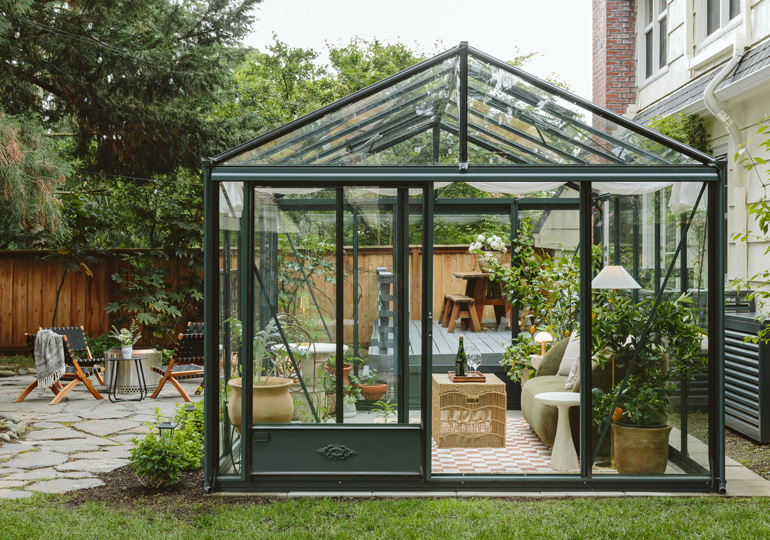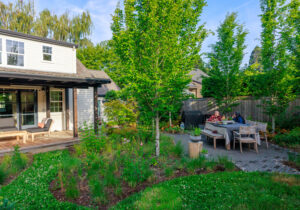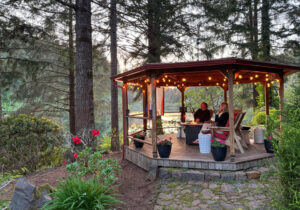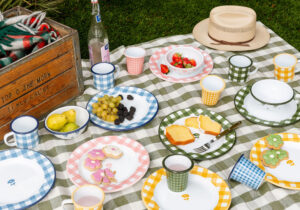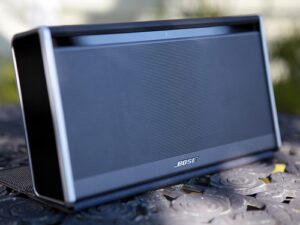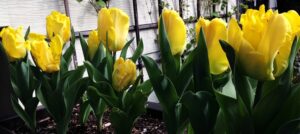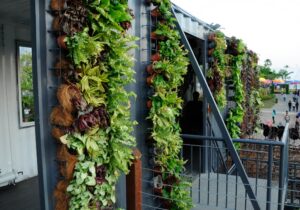Designer Alana Spears reinvents backyard living with an imported glass house.
Photography by Kaitlin Green
People who live in glass houses—well, maybe people should live in glass houses. At least that’s what designer Alana Spears learned after importing a glass-room structure from France through a Portland company and installing it in her backyard.
“Spending time outdoors is essential for our mental well-being,” Spears says. “It grounds us, soothes our minds and brings a quiet kind of joy.”
Most of the time, Spears’ design work focuses on bringing the sunshine inside through windows, material choices and a restrained use of color. But for her own home, a 1947 Tudor in the Montavilla neighborhood that couldn’t easily accommodate a more modern covered outdoor space, Spears saw an opportunity to try something really different, with a historic appeal.
“I envisioned slow mornings with coffee and journaling, mid-afternoon naps, hosting friends and family, projector movie nights, and maybe even a little stargazing,” Spears says.
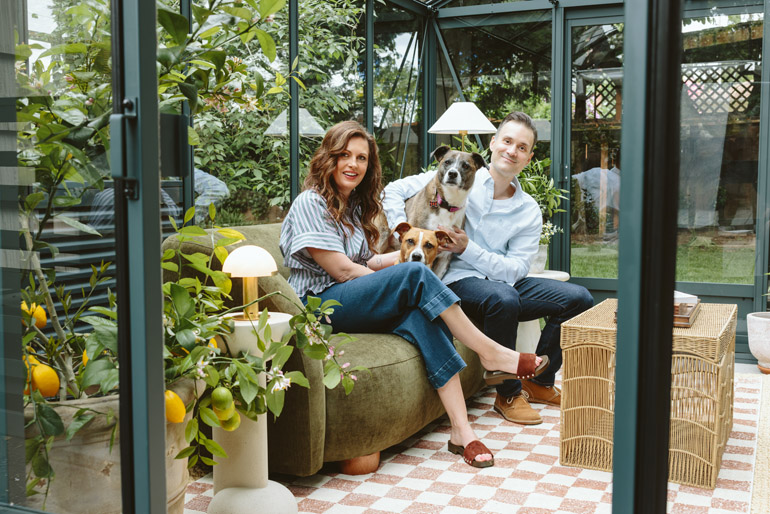
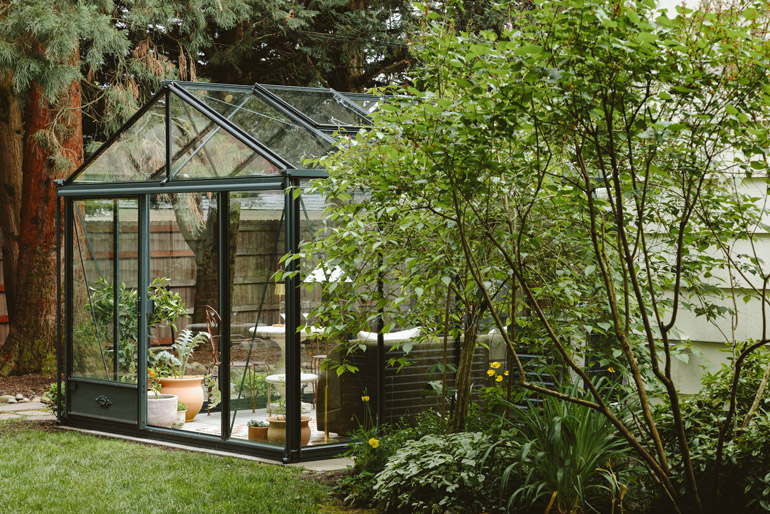
Deciding where to put the glass house in the family’s backyard was easy. She chose a sunny spot with east-to-west exposure near her home’s back door, positioned to allow for easy access from the house.
“I loved the idea of walking directly into it,” Spears says. “I wanted it to feel like a seamless extension.”
But where to source the glass house?
Spears explored all of the common options available in the Pacific Northwest, most of them made from plastic or polycarbonate, which wouldn’t hold up long-term in rainy climates. But then she heard from a friend about Versailles Gardens, a Portland-based supplier of French-made LAMS greenhouses crafted from aluminum, stainless steel and tempered glass. She chose the Luxia model in slate blue, with added features like automatic skylights, a retractable shade system, and sliding-glass doors on both sides.
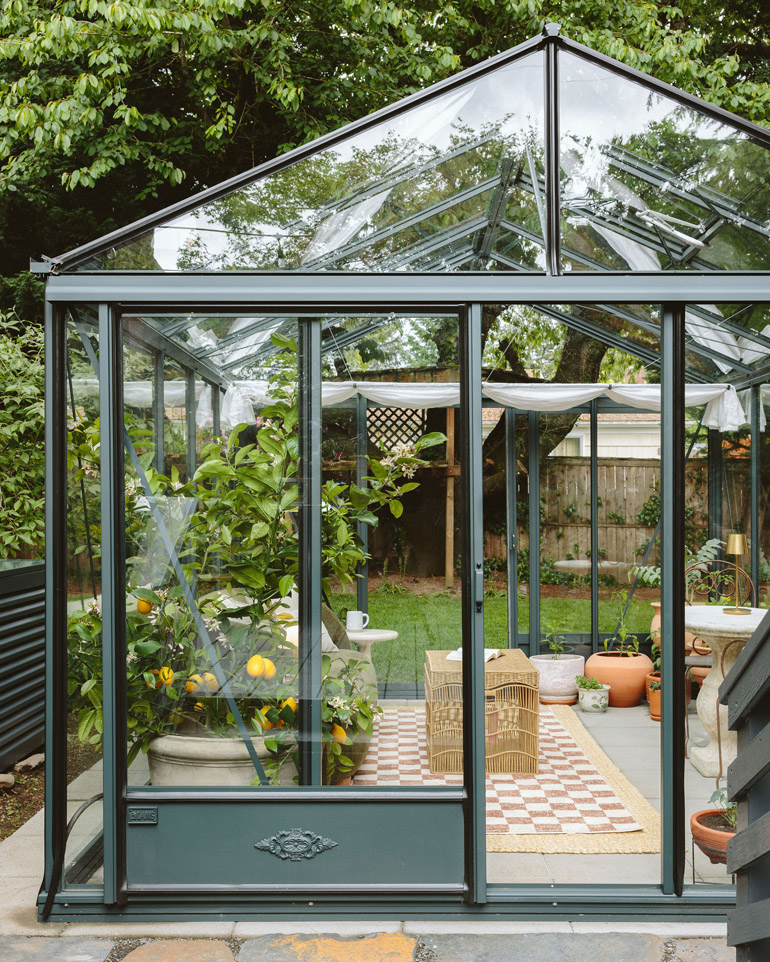
Spears cleans the windows of the glass house twice a year and hoses it off every so often. A spray-down window cleaner, or just a squirt of dish soap with a bucket of water, work well.
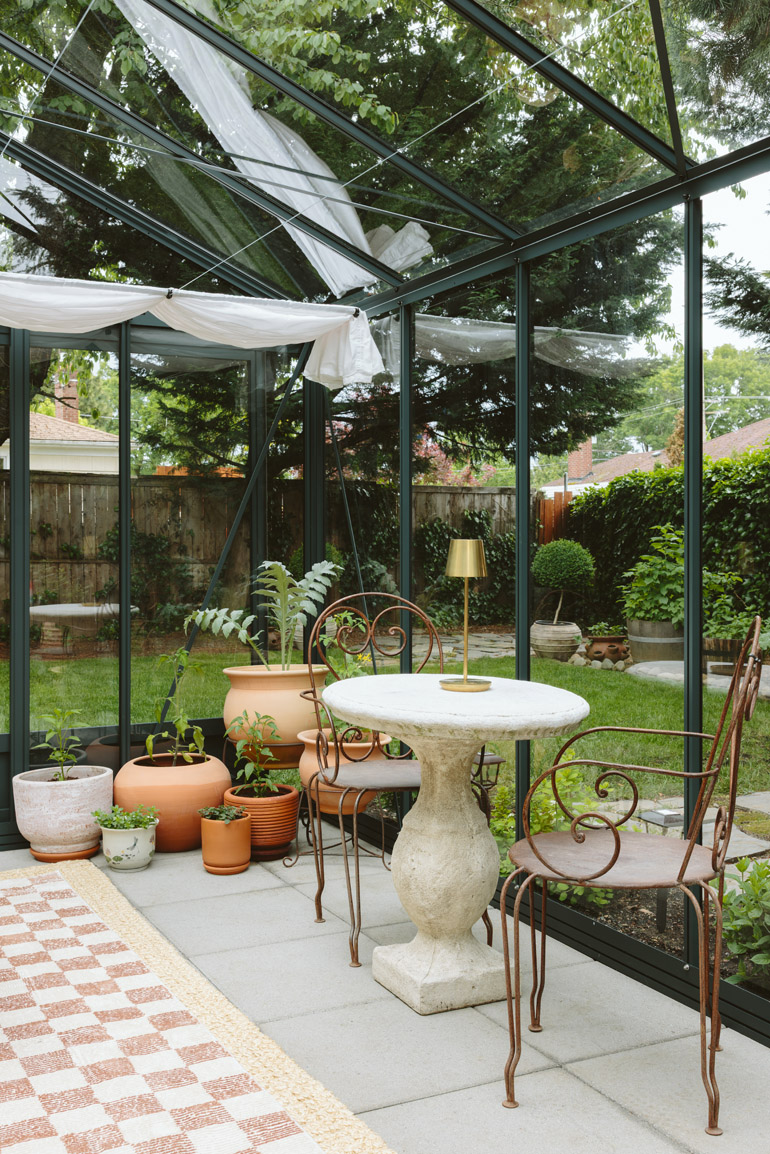
“These glass houses are elegant, durable and built to last,” she says.
Inside, Spears treated the room created by the glass house like any other designed for happiness and comfort. She chose a green sofa to create a monochromatic connection with the surrounding garden, a rust-and-white washable checkered rug for pattern and warmth, and terracotta planters that complement both the color palette and her family’s planting needs. She set up a workstation where she can take Zoom calls. For lighting, she worked in cordless, rechargeable fixtures by Visual Comfort.
“The bistro table and chairs—they are also from Versailles Gardens—bring a cohesive, European-inspired feel,” Spears says.
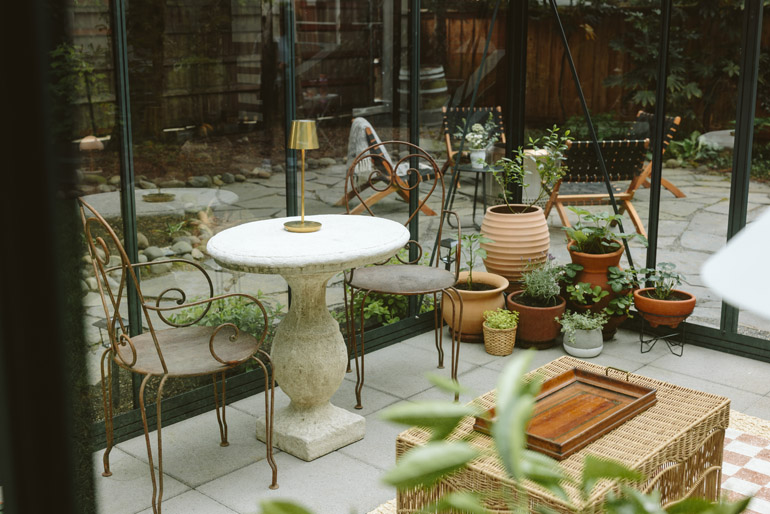
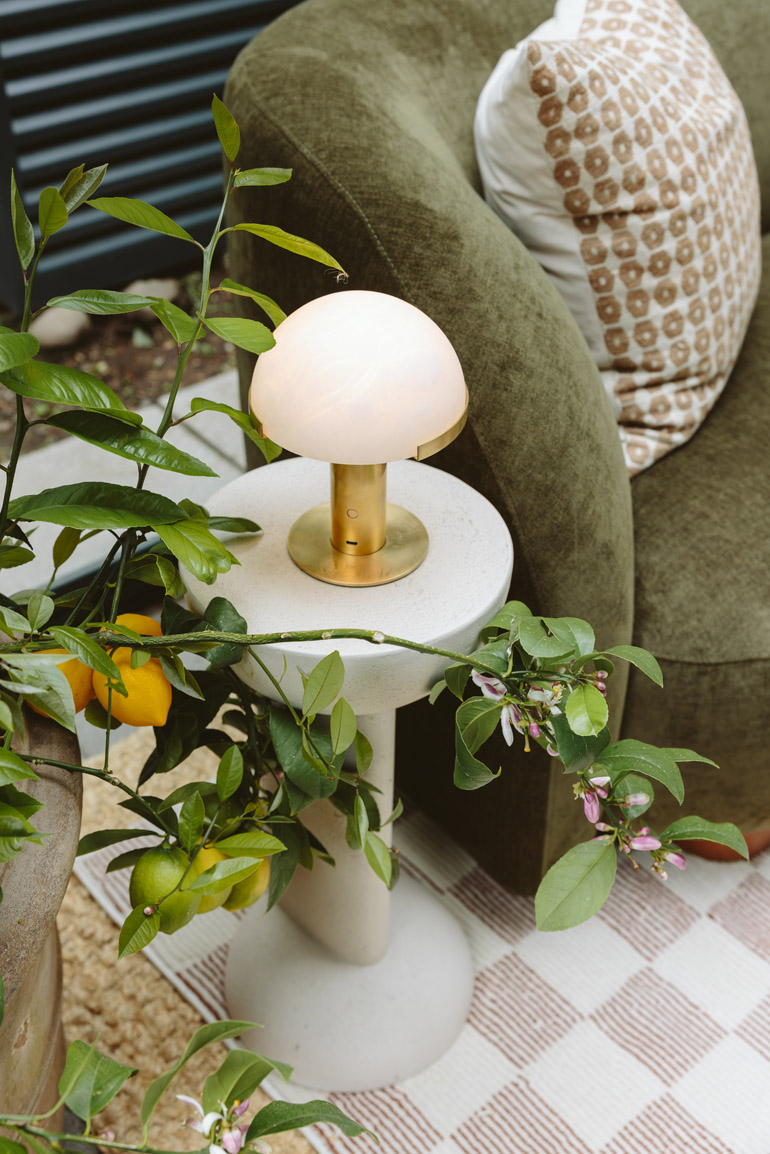
Spears and her husband planted summer produce like tomatoes, peppers and citrus in terracotta pots (since the space runs about 10 degrees warmer than outside).
Eventually, Spears hopes to turn the glass househis into a year-round retreat by removing a pane of glass from the roof and adding a wood-burning stove. But for now, this summer, it’s her family’s favorite spot—and where you’ll most often find her and her husband with their two fur babies, Augie Doggie and Frances Freckles.
“My plants finally have a protected place to grow—our dogs and the neighborhood squirrels usually beat us to the berries!” Spears says.
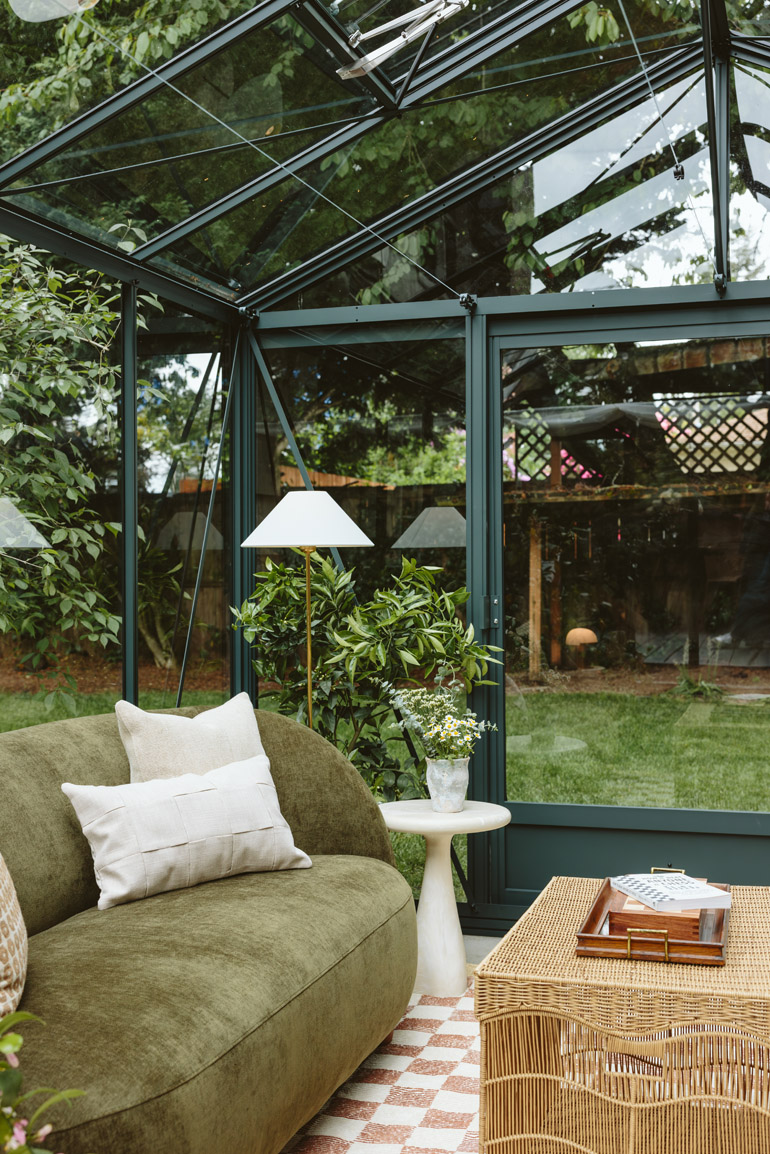
So you want a glass house? What to know…
Where do you source?
Versailles Gardens, based in Portland, imports LAMS greenhouses from France, inspired by designs from the 19th century.
What are the materials?
Aluminum structures come in matte or glossy finishes and in 14 colors, with stainless-steel hardware. A base is included.
Where should you put it?
If you use your glass house to raise plants year-round, you will need to place it in a sunny spot.
How long do they last?
The manufacturer guarantees materials for 10 years.
Where can I see a glass house?
By appointment at Versailles Gardens, 1820 NW Vaughn Street, Portland.
How do you prep for the kit?
Install pavers that are 100% level.



